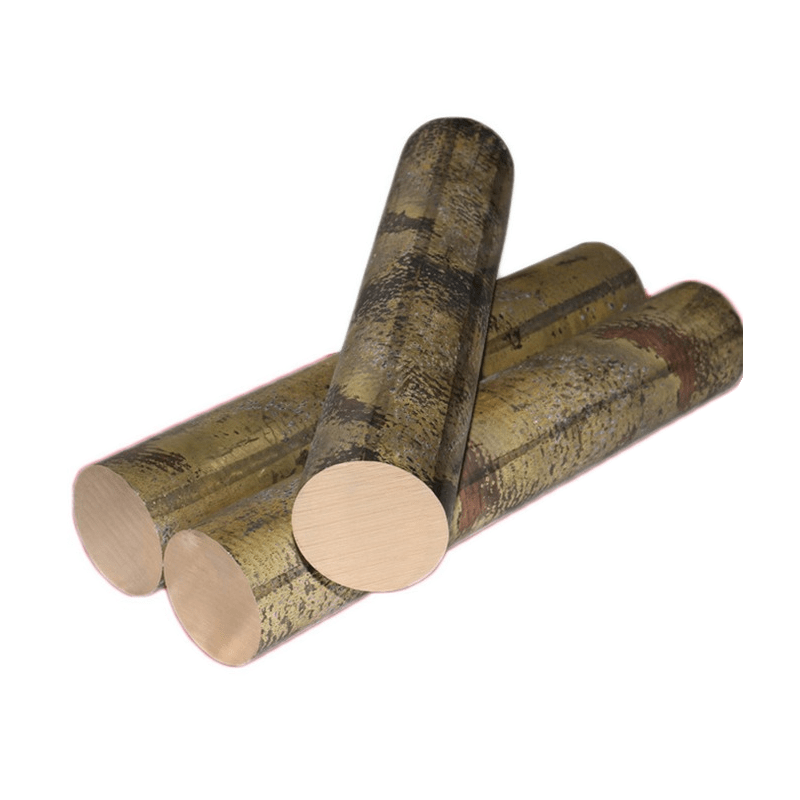
Here’s a detailed comparison between UNS C62300 and UNS C62400 copper alloys, structured into sections and tables for ease of understanding. This comparative analysis includes essential properties, performance metrics, industry applications, processing methods, and more.
Comparison of UNS C62300 and UNS C62400 Copper Alloys
소개
UNS C62300 and UNS C62400 are both aluminium bronze alloys known for their excellent mechanical and corrosion-resistant properties. They find applications in various industries, particularly in marine, pump, and valve components. Despite their similarities, they exhibit distinct differences in composition, performance, and applications, which are essential for engineers and material scientists to understand.
화학적 구성 요소
The chemical composition of these alloys significantly influences their mechanical properties and performance characteristics. Below is the comparison of their elemental contents:
| 요소 | C62300 (% Content) | C62400 (% Content) |
|---|---|---|
| 구리 | 82.2 – 89.5 | 82.8 – 88.0 |
| 알루미늄(Al) | 8.5 – 11.0 | 10.0 – 11.5 |
| 철(Fe) | 2.0 – 4.0 | 2.0 – 4.5 |
| 망간(Mn) | ≤ 0.6 | ≤ 0.3 |
| 실리콘(Si) | ≤ 0.25 | ≤ 0.25 |
| 주석(Sn) | ≤ 0.5 | ≤ 0.2 |
| 다른 | ≤ 0.5 | ≤ 0.5 |
기계적 성질
The mechanical properties, including strength, hardness, and ductility, determine the suitability of these alloys for specific applications. Here’s a detailed look at their properties:
| 속성 | C62300 | C62400 |
|---|---|---|
| 경도(로크웰 B) | 89 | 92 |
| 인장 강도 | 605 MPa | 655MPa |
| 항복 강도 | 305 MPa | 330 MPa |
| 파단신율 | 15% | 14% |
| 탄성 계수 | 117GPa | 117GPa |
| 포아송의 비율 | 0.34 | 0.34 |
| 샤르피 임팩트 | 25.0 – 40.0 J | 15.0J |
| Izod Impact | 43.0 – 47.0 J | 23.0 J |
| 피로 강도 | 200 MPa | 235 MPa |
| 가공성 | 50 | 50 |
| 전단 계수 | 44 GPa | 44 GPa |
다양한 온도에서의 성능
Performance at elevated and varying temperatures is critical for applications in harsh environments. Below is a comparison of how each alloy performs thermally:
| 재산 | C62300 | C62400 |
|---|---|---|
| 녹는 점 | 1041°C (1905°F) | 1027°C (1880°F) |
| 열팽창계수 | 16.2 µm/m°C (9.00 µin/in°F) | 16.5 µm/m°C (9.17 µin/in°F) |
| 열 전도성 | 54.4 W/mK (378 BTU in/hr.ft²°F) | 58.6 W/mK (407 BTU in/hr.ft²°F) |
산업 응용
Due to their favorable properties, both alloys are utilized in a range of applications, particularly in challenging environments:
| 애플리케이션 | C62300 | C62400 |
|---|---|---|
| Valve Components | 예 | 예 |
| Pump Components | 제한된 | 예 |
| Marine Equipment | 예 | 예 |
| High Strength Fasteners | 예 | 예 |
| 폴 라인 하드웨어 | 예 | 예 |
모양과 크기
The availability of these alloys in various shapes and sizes makes them versatile for different manufacturing processes:
| 기인하다 | C62300 | C62400 |
|---|---|---|
| 사용 가능한 모양 | 막대, 바 | 막대, 바 |
| 표준 크기 | 다양한 | 다양한 |
| 공통 양식 | 시트, 플레이트 | 시트, 플레이트 |
생산 표준
Both alloys adhere to various national and international standards for quality assurance:
| 기준 | C62300 | C62400 |
|---|---|---|
| 천식 | B124, B150 | B150 |
| 저 같은 | SB150 | SB150 |
| SAE | J461, J463 | J461, J463 |
용접 및 가공
The ability to weld and form these alloys is essential for their application in manufacturing:
| 처리방법 | C62300 | C62400 |
|---|---|---|
| 용접 호환성 | Gas shielded, spot, brazing, butt | Gas shielded, spot, brazing, butt |
| 선호하는 용접 방법 | No soldering or oxyacetylene welding | No soldering or oxyacetylene welding |
| Forging Temperature Range | 705 to 872°C (1300 to 1600°F) | 760 to 885°C (1400 to 1625°F) |
| 뜨거운 작업 | Good capacity | Good capacity |
| 냉간 가공 | Good capacity | Poor capacity |
| Annealing Temperature Range | 594 to 649°C (1100 to 1200°F) | 594 to 650°C (1100 to 1200°F) |
장점과 단점
Understanding the benefits and limitations of these alloys is vital for material selection:
| 기인하다 | C62300 | C62400 |
|---|---|---|
| 장점 | 강도가 좋고 부식에 강함 | High strength, suitable for heat treatment |
| 단점 | Moderate cold workability | Poor cold workability |
유사한 제품
These alloys share properties with other copper-based alloys, offering alternatives based on specific needs:
| 유사한 제품 | 속성 |
|---|---|
| 알루미늄 청동 합금 | High corrosion resistance and strength comparable to C62300 and C62400. |
| 구리 니켈 합금 | Excellent corrosion resistance for marine applications. |
Simple Comparison of Similar Products
| 제품 | 내식성 | 힘 | 애플리케이션 |
|---|---|---|---|
| UNS C62300 | 높은 | 보통의 | Marine, Valves, Pumps |
| UNS C62400 | 더 높은 | 높은 | Pumps, High-strength fasteners |
| 구리 니켈 합금 | 매우 높음 | 보통의 | Marine, plumbing |
결론
In summary, both UNS C62300 and UNS C62400 alloys present valuable options for industries requiring high strength and corrosion resistance. Their distinct properties and compositions cater to various applications, from marine equipment to industrial components. Selecting the appropriate alloy depends on specific requirements such as thermal performance, mechanical strength, and fabrication processes. Understanding these nuances will enable engineers and manufacturers to make informed decisions for their projects. If you have any further questions or need more specific information, feel free to ask!
